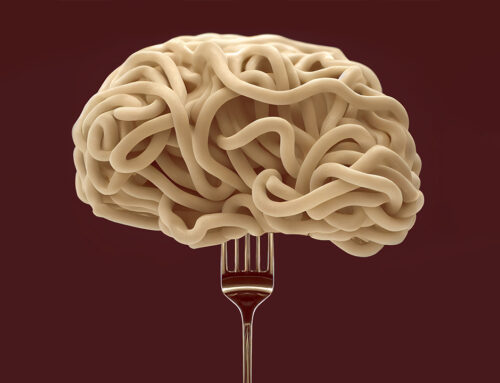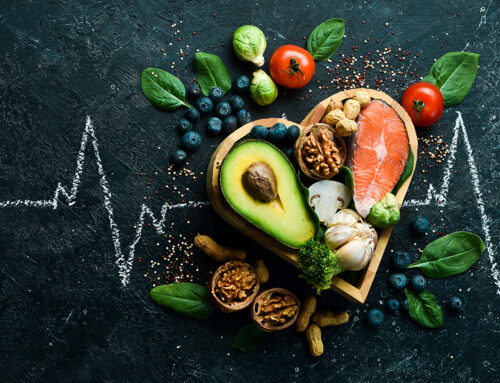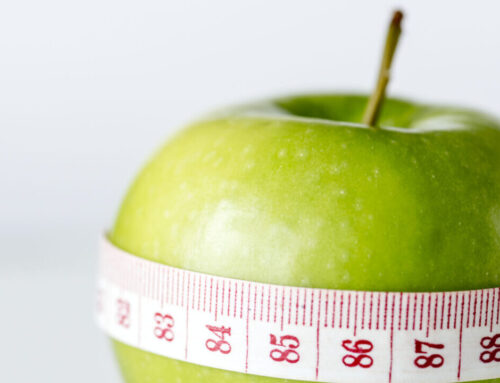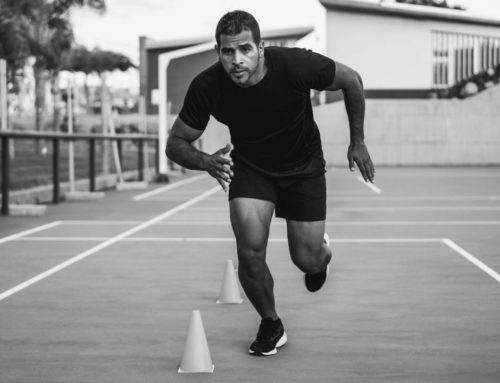It’s good to be a big baby, whether it’s toothpaste or certain foods, there is plenty out there that can harm little ones, but why are you allowed these poisons? TRAIN investigates whether are not you should grow up about your training and nutrition regime
We get it so good at the start of our lives, pity we don’t remember the lap of luxury. It’s a slugfest of being hand-fed all your pet nutrients in very appealing crockery while having every ablution catered for and all you have to do deliver knockout blows of looking cute. Then quick as a hiccup you’ve grown up to be saddled with trappings of adult life, altering all your movement and dietary habits in the process. While change and aging is a natural part of all life, babies still wear the same sensitive DNA as you – you just have more bodyweight insulating it.
Then quick as a hiccup you’ve grown up to be saddled with trappings of adult life, altering all your movement and dietary habits in the process. While change and aging is a natural part of all life, babies still wear the same sensitive DNA as you – you just have more bodyweight insulating it.
So why are you allowed unlimited spoons of peanut butter when they can’t even have a taste and how come you’re discouraged from crawling from the very moment you learn to walk? The answer lies in a growing school of thought that suggests if something isn’t safe for a baby or a pregnant woman then, in theory, it’s not really completely safe for anyone, even if you’re a red-blooded lifter.
We pried open the rabbit hole on this notion and fell through it to give you the information you need to land on your feet with increased physical power, health and longevity.
What once was may not always be
If you were a little tyke born no fewer than five years ago, you busted into a universe that would see you receive nil peanut butter by mouth, well, until you had the molars that could pulverize a carrot. The experts said you had wait until you huffed and puffed on a birthday cake sporting three candles before experiencing the glory of a P&J sandwich or you risked developing a peanut allergy – or so everyone thought.
Contrast this to Israel’s bubs who have extraordinarily low rates of peanut allergies, yet are brought up on peanut rich snacks from day dot, and this was where the paradigm shifted enough for the National Institute of Allergy and Infectious Disease to say it’s safe to give young kids small amounts of peanut butter. How does this affect you?
Well, it’s a window into how the beliefs we regard as unsafe today, may actually become safe in the future and by that rationale what we believe is currently safe may prove to be unsafe. The definitive safety test for all things is how a fellow human’s body reacts to a food, activity or substance, and babies are acutely sensitive to anything that’s remotely bad for the body.
First, pump the brakes because a tiny dose of anything bad isn’t even going to be a blip on your health radar, but that doesn’t mean it’s not bad for you if eaten or done regularly because a paper in the American Journal of Industrial Medicine found the intensity of exposure is less of a deciding factor of overall health, compared to repeated exposure over time.
So breathing in plumes of smoke while you escaped a house fire is often a whole lot less harmful than smoking 20 cigarettes for 40 years – even though you may have inhaled the same amount of smoke. It’s the repeat offenders that systematically shave years off your life, seconds from your performance and tightness off your sleeves.
Researchers are finding new things about our foods all the time, a point made by a new paper in JAMA Pediatrics that discovered English infants who ate rice and rice products had double the levels of urinary arsenic concentrations than those who abstained from rice. In adults, harmful levels of dietary arsenic exposure can lead to rashes, heart irregularities and damage to your nervous system.
While a bub may only scoff a certain amount based on their bodyweight, there’s no reason to think you’re not eating the equivalent quantity of rice based on your current bodyweight when you refuel after your training.
Fortunately, to get rid of rice’s sticky arsenic problem, according to Andy Meharg, professor of biological sciences at Queens University Belfast, all you need to do is soak it over night then wash and rinse it until the water is clear, before draining it and cooking it with a ratio of five parts water to one part rice. This is an easy solution but the more you look for these dietary canaries in your coal mine, the more you should consider varying your diet.
The worst health offenders
The world is a perilous place when you’re young, even growing the first tooth can be minefield for their health. Just have a look at back your toothpaste’s box and, despite what the TV adverts tell you, there’s a good chance you’ll find an age restriction hidden in the fine print. Swallowing a tiny amount can lead to fluorosis in children.
Even though you’re smart enough to know it needs to be spat out, if the cleaning product for your pearly whites carries this warning, it may be prudent to consider switching to one without such cautions. These warning signals are littered across products everywhere so it’s worth reading the fine print, especially if it’s a food or beverage.
Consider a tin of harmless energy drink, it’s not something you’d offer to a little one for obvious reasons, yet there is plenty of evidence that adolescents and teenagers put their health at a serious risk when lapping up this kind of get-up-and-go. Obvious, right, but why is it safe for you?
Well, it isn’t, new research in the Journal of the American Heart Association found energy drinks can kick off potentially life-threatening changes in blood pressure and heart. That extra pop is hardly worth the risk and only once you cross off the obvious reprobates unsuitable for bubs, such as beer and raw animal proteins, there are still some hidden offenders that offer an interesting consideration into how your body reacts to certain ingredients.
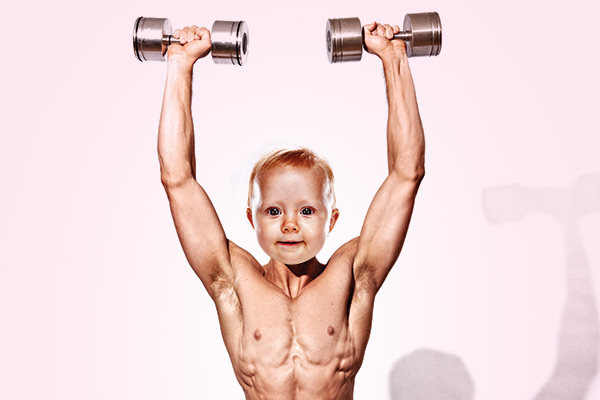
This is especially true if you’re trying to build up your body, the way a youngster needs to. Leading the charge is the often-demonized sugar, but its cousin fructose is a far more dangerous offender. The University of Southern California found fructose is so powerful that a baby receiving a paltry dose of it, that was the size of a grain of rice, dramatically increased their body weight, muscle and bone mineral content.
While those may seem like good things, that much energy isn’t all glory. Michael Goran, the study’s lead author, puts it into perspective, “We know very little about why some children eventually become overweight or obese. Caregivers can shield babies and children from harmful effects of sugars by carefully choosing infant formula, baby foods and snacks without added sugars or sweeteners.”
Fructose is leading the obesity charge and food companies are savvy to its negative connotations, so they’re trying desperately to conceal it. Fortunately, you can look out for the ingredients such as HFCS-90 or HFCS-44 in seemingly healthy products such as sauces, dressings, sports drinks and multi-grain breads.
How the body reacts to a lack of certain nutrients also offers an interesting window into why your sporting performance may ebb and flow. New research from Maternal & Child Nutrition discovered that infants being deficient in vitamin B1 (thiamine) had really poor motor function skills and impaired balance – fortunately, by introducing this vitamin back into their diet, most were able to make a full recovery.
“The body’s capacity for storing Vitamin B1 is limited,” explains Professor Aviva Fattal-Valevski, the study author. “Unlike vitamin B12, vitamin B1 is only stored in the body for three weeks.” Some of the other telltale signs of a deficiency include poor appetite, fatigue, muscle weakness and irritability.
So if you’ve deviated from your usual diet and are finding that you’re not as athletically gifted as you once were, then load up on the richest food sources of this vitamin, which include fish, pork, sunflowers, macadamia nuts and asparagus. Although sporting glory can be a temperamental beast these foods may help you make a recovery to start a new winning streak.
Child’s play
It’s not just junior’s dietary precautions that can place your health in a youthful position, but their movement patterns are worth emulating if you want to give your performance a boost. Crawling is a movement that strengthens a child’s shoulders, hands and core, while stimulating the brain for improved learning and coordination. And if it’s good for them, it’s even better for you. “Our entire movement system is based on the developmental sequence,” explains Tim Anderson, author of Bulletproof your Body and co-founder of Original Strength.
“It is amazing that the way a baby moves is still the way to tie an adults body together and keep them strong. When a fully-grown athlete engages in a developmental movement pattern like crawling, it is like pressing a reset button on their body. Crawling is a developmental and foundational movement pattern that is “preprogrammed” in every individual’s original operating system (their nervous system) whether they actually crawl or not. Crawling feeds the nervous system with a flood of information.
The motion itself connects both hemispheres of the brain, making them more efficient, and the information crawling generates a “movement map” of the body. The brain learns where everything is; where the joints are, where the muscles are, which muscles should stabilize the joints and which muscles should move the joints. With all the information crawling gives, the brain then floods the body with the appropriate movement responses, sharpening the reflexes throughout the entire body and effectively tying the body together, making it very solid and strong from the center to the outside (think from the core to the limbs).
The more efficient the brain, the better the body’s movement map, and the more connected the body is, the least likely the body is to get injured and the more strength and mobility the body can express. Crawling is a reset because it refreshes the nervous system, reminds the brain where everything is, it restores the gait pattern (walking and running), it optimizes our posture, and it restores the body’s mobility, strength, and resiliency.
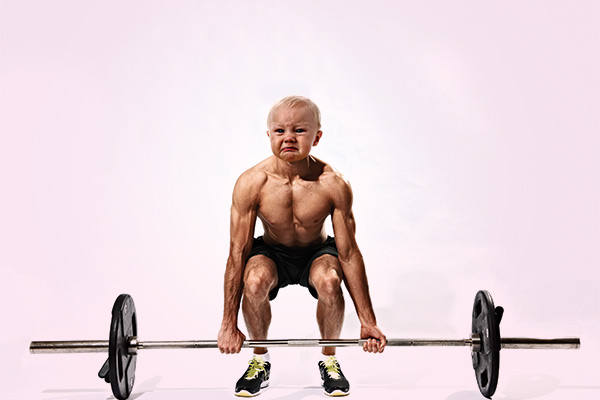
Best of all, the benefits of crawling happen at the speed of the nervous system. In other words, if a 40-year-old man gets down on the floor and starts crawling, good things start happening inside his body right then.” It’s comparable to moves such as deadlifts and bird-dog, in terms of the core benefits you’ll receive, yet it’s a lot easier to learn for a newbie and doesn’t carry all the potential for serious injury if done without immaculate form.
While it may seem easy, it involves a lot more concentration that you might imagine. The goal is to keep your head high as you move the opposite arm and legs. If you think of abdominal moves such as the dead bug or bird dog, which are similar in its execution, crawling, of course, involves movement that gives your core additional strength that transfers into sports and almost all forms of exercise.
Mike Fitch, a strength coach and inventor of the Animal Flow exercise system, suggests that variations on crawling can even improve your Crossfit performance. An exercise of his invention, called the Forward Travelling Crab, involves sitting down with your hands behind you, fingers pointing away from your feet and raise your glutes an inch off the ground. You then begin to walk forwards using your hands and feet, like a crab – or a reverse crawl.
“Shoulder impingement is a big issue for Crossfitters and this move builds the muscles that push your shoulders back and down into perfect posture,” explains Fitch. It’s these variations of moves that we experiment with when we’re very young and playful, that set us up to be powerful enough to walk upright which is massively energy efficient in the long run. Often we lose strength in the supporting muscles that helped us stand and walk upright. It’s these weaknesses and imbalance that cause niggling injuries to rear their head.
While a regularly crawling may not be the cure all, it’s a very worth while practice to add to your exercise routine, regardless of whether you’re a runner, cyclist, sportsman or lifter, because a little reverse engineering of your movement patterns and dietary considerations can help you feel youthful again.
Unlock your crawling superpower
Tim Anderson gives you the breakdown for improving all your movement patterns
Week 1:
Crawl backward on your hands and knees for 5 minutes a day. Keep your head up – no looking down at the ground, that’s silly. Keep your chest tall, and keep your mouth closed. If you have to open your mouth to breathe, or if you have to drop your head, rest and stop the clock until you can resume crawling with your lips closed and your head held up. Accumulate 5 minutes of backward crawling.
Week 2:
Crawl backwards on your hands and feet for 5 minutes a day. Again, keep your head up, your chest tall, your mouth closed, let your knees track inside your elbows, AND keep your bum down below your head. This is not a bear crawl. If you have to open your mouth to breathe, if you drop your head, or if your butt pops up above your head, stop the clock and rest until you can resume the desired form. Accumulate 5 minutes of backwards crawling.
Week 3:
Crawl backward for 8 minutes. Alternate crawling on your hands and knees one day and crawling on your hands and feet the next day. Use the same crawling rules as above and accumulate 7 minutes of backward crawling.
Week 4:
Aim for 10 minutes of backward crawling, alternating between crawling on your hands and knees one day and crawling on your hands and feet the next day. Same rules! Accumulate 10 minutes of backward crawling. Hopefully, it will only take you 10 minutes.
If you do this, if you act on this simple challenge with this simple movement, do not be surprised if you experience new levels of strength and enhanced athletic performance. Things that were once difficult – such as an overhead press – become easy, new PR’s suddenly happen, aches and pains suddenly disappear. It’s quite wonderful, really.
Baby steps
Age teaches us to override our instincts but that doesn’t mean we’re smarter, here’s why
Bottle-feeding is powerful
In our first 4-6 months it’s all about the liquid and this helps us thrive because we’re optimizing hydration. A new study at the University of Illinois found increasing water intake by a measly 2-3 cups a day, meant people ate 68-205 fewer calories every day.
What’s more, their sodium intake was cut by 78 – 235 milligrams, sugar intake was cut by 5-18 grams and cholesterol intake dropped 7 to 21 milligrams daily. It’s probably the best sports supplement you can have and it’s almost free.
Sleep when you’re sleepy
A tired bub is grumpy, unhappy and unhealthy. As you get older the effects are worse. Feeling exhausted thanks to a lack of sleep is associated with a greater risk of metabolic syndrome associated with obesity, found a new paper by the American College of Cardiology.
It’s not just a healthy weight that good sleep practices can foster, but the snooze-scientists are finding steep decline in your sleep quality when you hit 30, which is one of the reasons you age. As your brain racks up the years, the neurons and circuits that control sleep degrade, resulting in a decreased amount of non-REM sleep.
The researchers suggest optimal temperature is 65º (18ºC) which keeps your body cool enough to clock up that deep sleep, so adjust your thermostat to feel leaner and more rested.
Hugs health boo-boos
The urge to embrace a crying tot exists for a reason: hugs heal. It’s not hippy science; it’s hard science in the Psychological Science journal. They found frequent hugging alleviates cold symptoms and boosts your immune system.
What’s more, previous studies have found hugs release the oxytocin that lowers blood pressure, reduces stressful anxiety and improves memory. It’s not a one way street, you’ll both benefit, but that doesn’t mean you can hang a ‘free-hugs’ sign around your neck to save on medication.
For optimum results, put the big squeeze on for 20-30 seconds and you’ll turn those frowns upside down.
For more transformations, nutrition tips, workouts and supplements, get TRAIN magazine direct into your inbox every month for free by signing up to our newsletter
References:
Energy drink
https://www.sunshinecoastdaily.com.au/news/energy-drinks-unleash-potentially-life-threatening/3171344/
Water intake
https://www.sciencedaily.com/releases/2016/03/160301174759.htm
Sleep
https://www.sciencedaily.com/releases/2016/03/160323185548.htm
http://www.news.com.au/lifestyle/health/researchers-discover-why-sleep-becomes-harder-from-our-mid30s-and-say-its-no-coincidence-this-is-when-we-begin-to-show-signs-of-ageing/news-story/669510923b68419781073fa40245aea5
Hugs
http://journals.sagepub.com/doi/abs/10.1177/0956797614559284
http://www.dailymail.co.uk/health/article-2266373/Hugging-lower-blood-pressure-boost-memory.html
Peanuts
https://www.washingtonpost.com/news/to-your-health/wp/2017/01/05/new-nih-guidelines-on-infants-and-peanuts-may-contradict-everything-youve-heard-before/?utm_term=.9c2c35a2b587
Long-term exposure
https://www.ncbi.nlm.nih.gov/pubmed/1553984
Rice exposure
https://www.sciencedaily.com/releases/2016/04/160425141759.htm
Arsenic rice
http://www.independent.co.uk/life-style/health-and-families/health-news/rice-cooking-arsenic-traces-poisonous-boil-water-away-drain-excess-danger-food-a7568436.html
Fructose
https://www.sciencedaily.com/releases/2017/03/170302115834.htm
B1
https://www.sciencedaily.com/releases/2017/03/170329140952.htm
Vitamin B12
https://www.sciencedaily.com/releases/2017/03/170327083243.htm
Uric acid
https://www.sciencedaily.com/releases/2017/03/170315152421.htm
BPA
https://www.sciencedaily.com/releases/2016/12/161207092920.htm
http://www.cbsnews.com/pictures/bpa-7-secret-sources/8/



